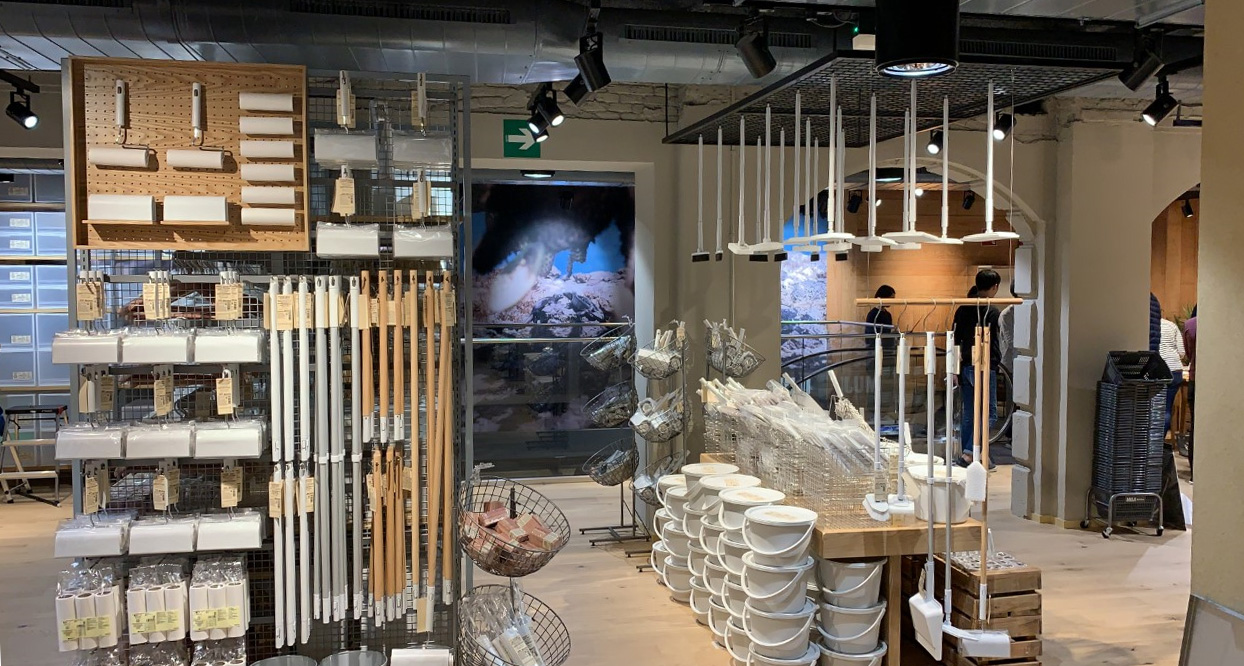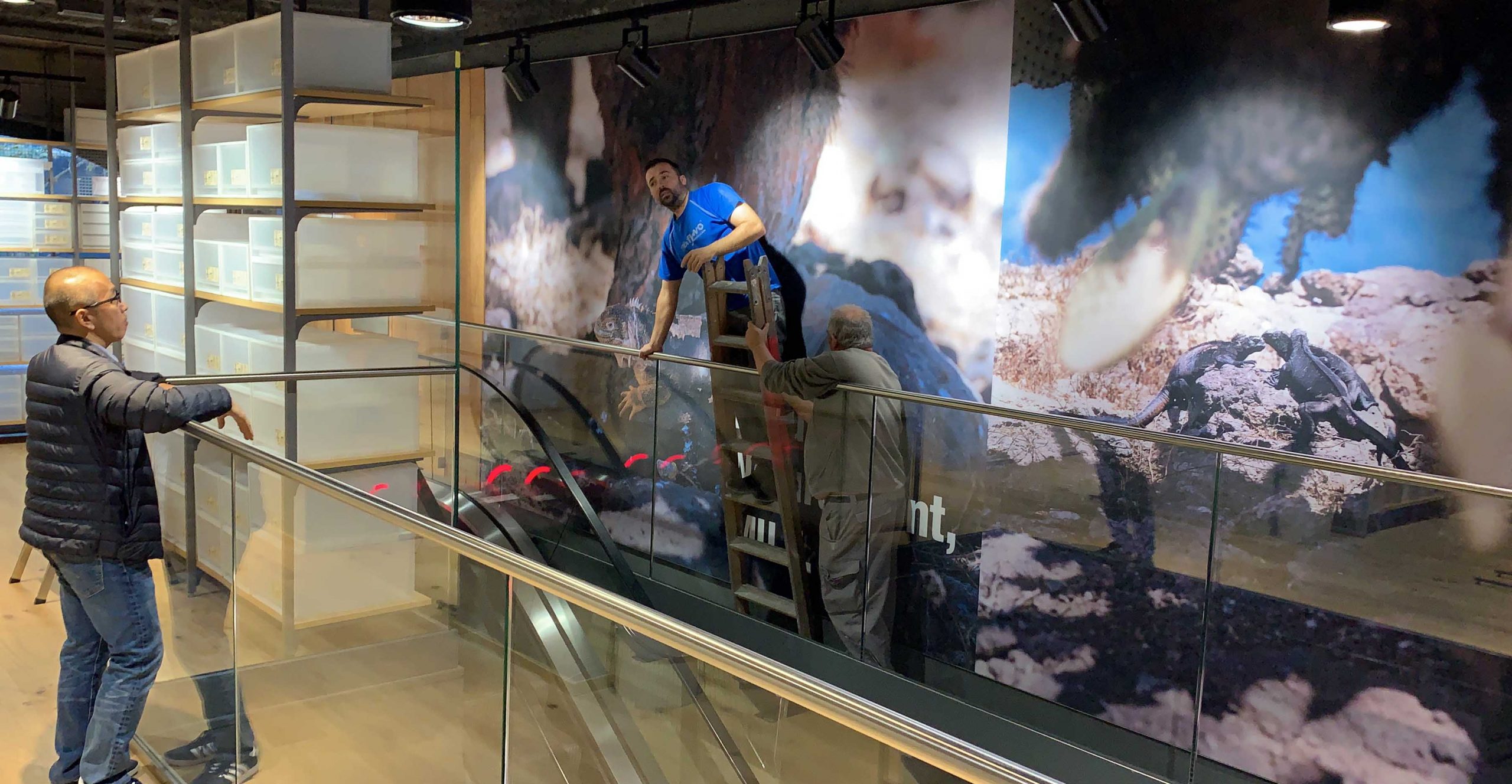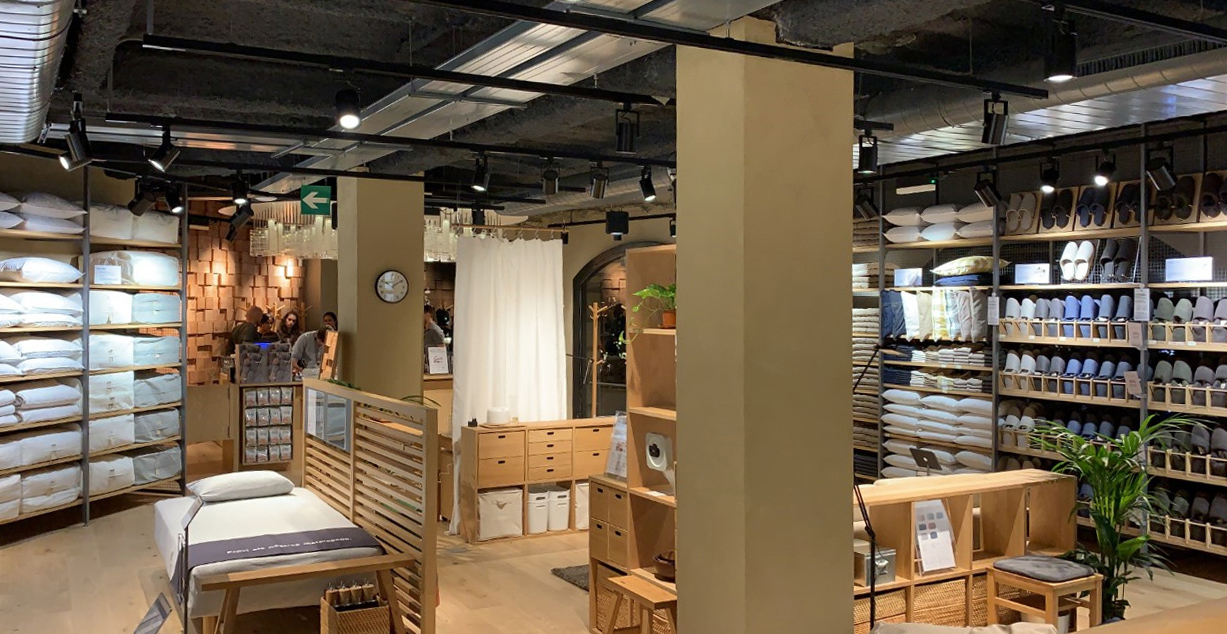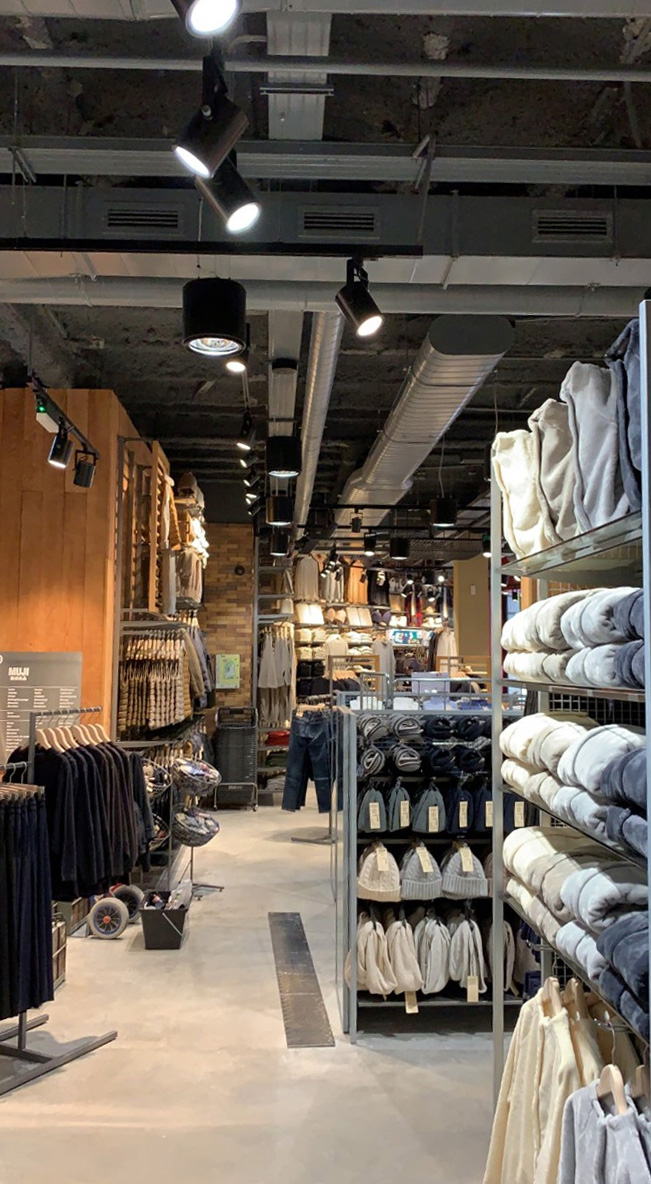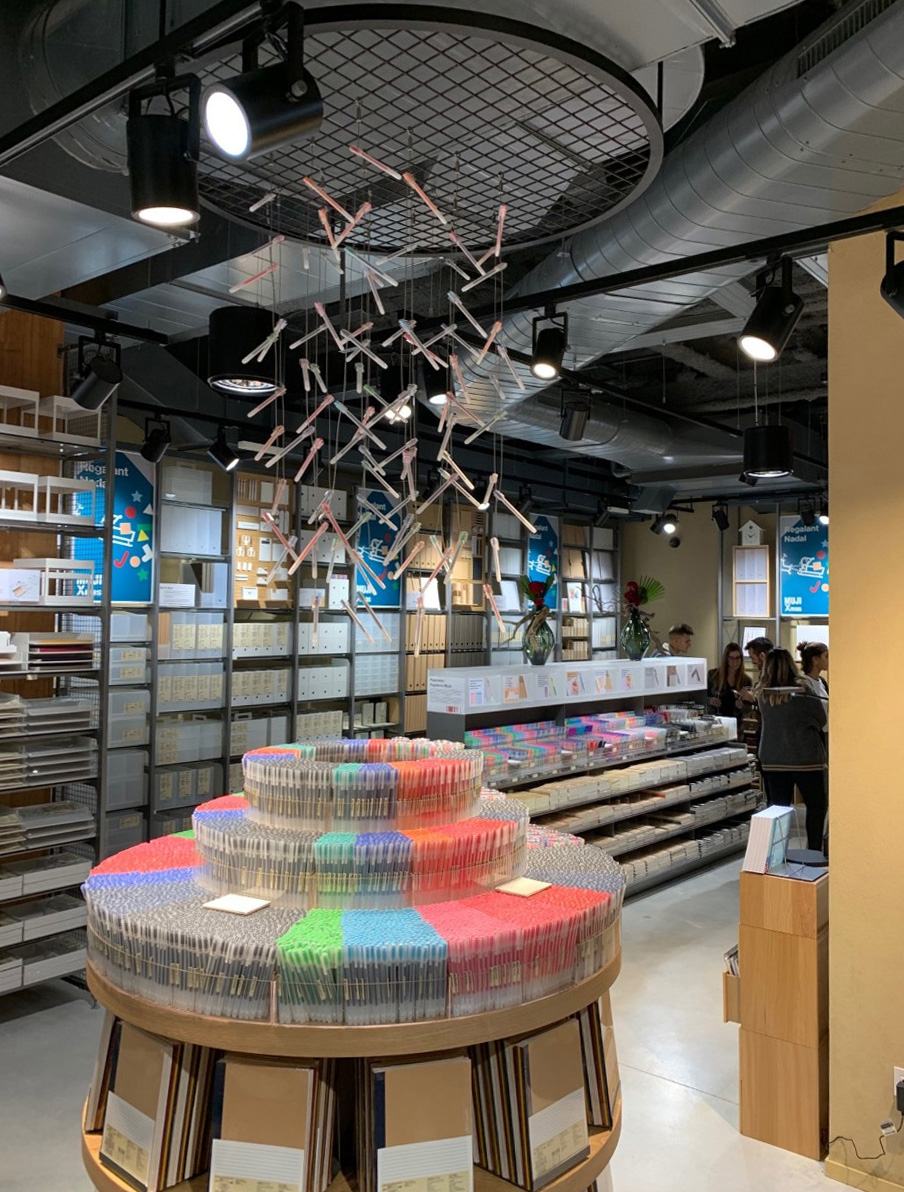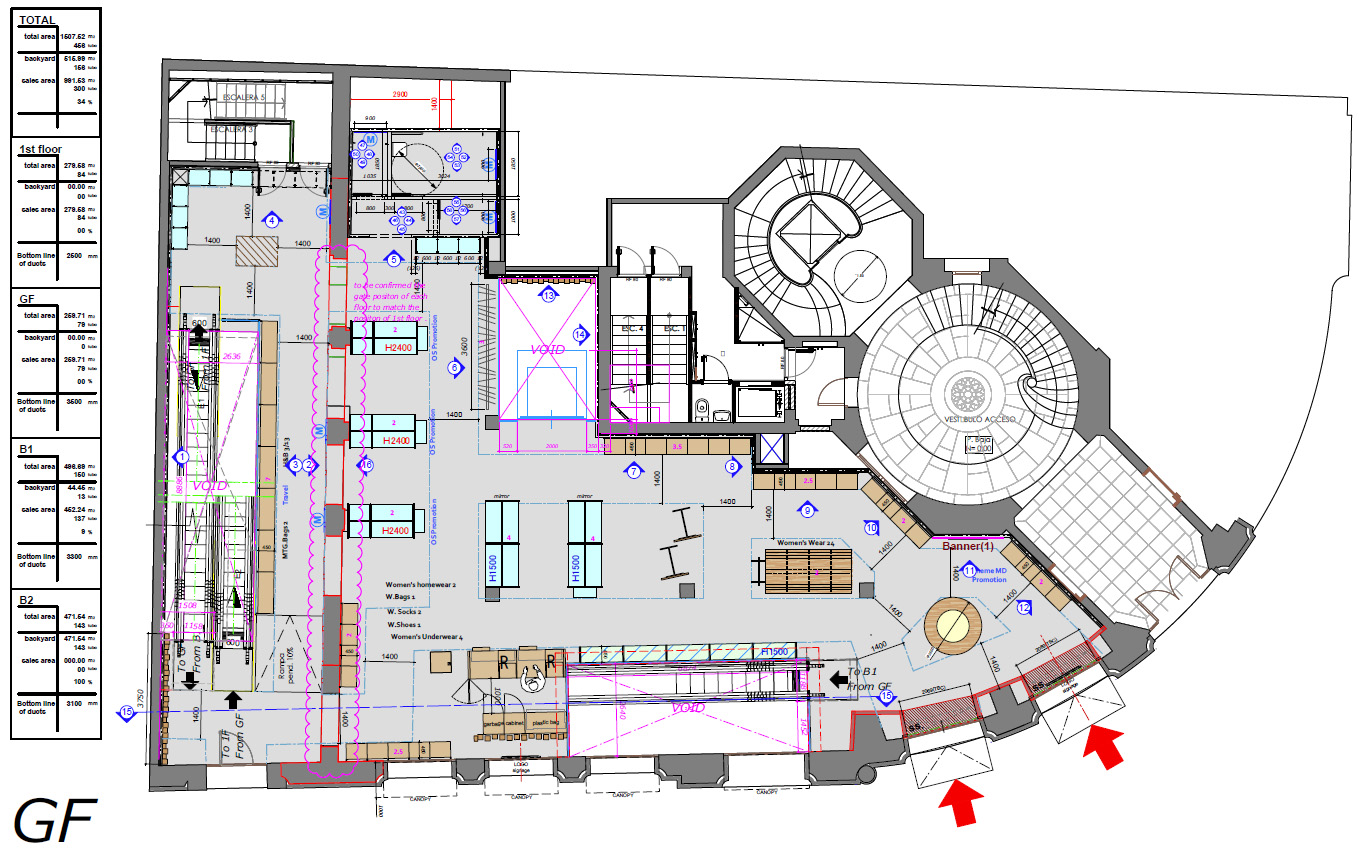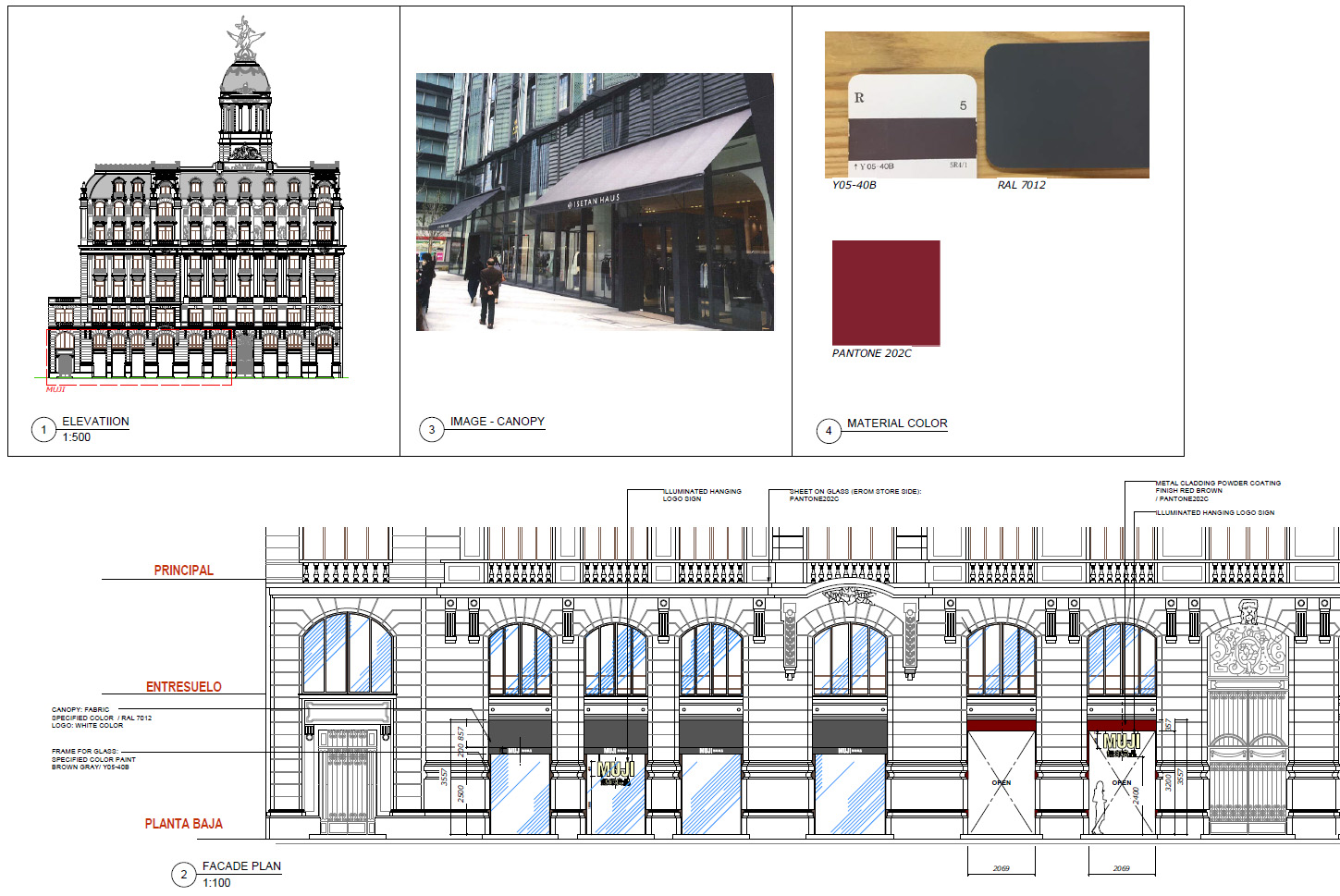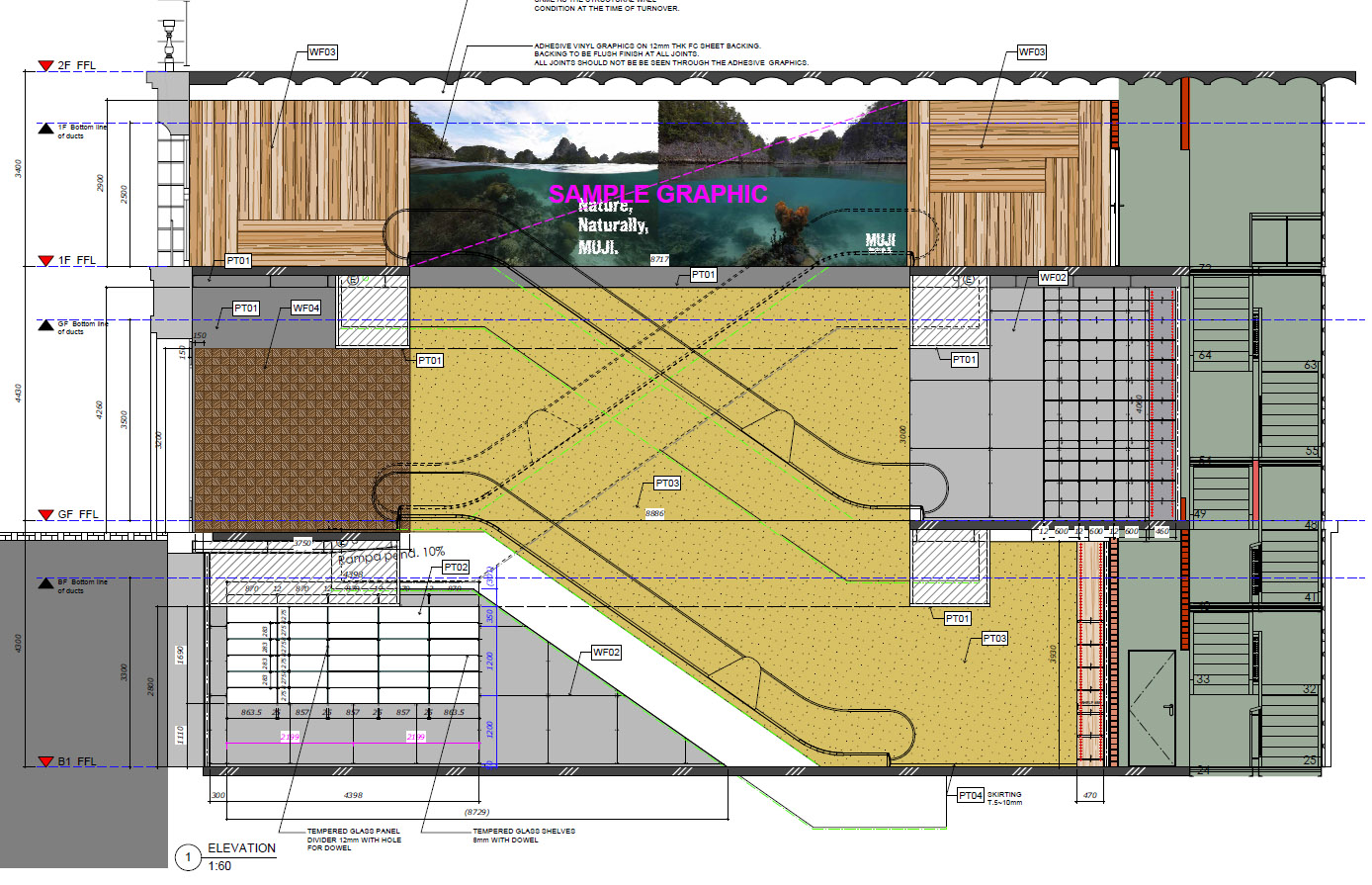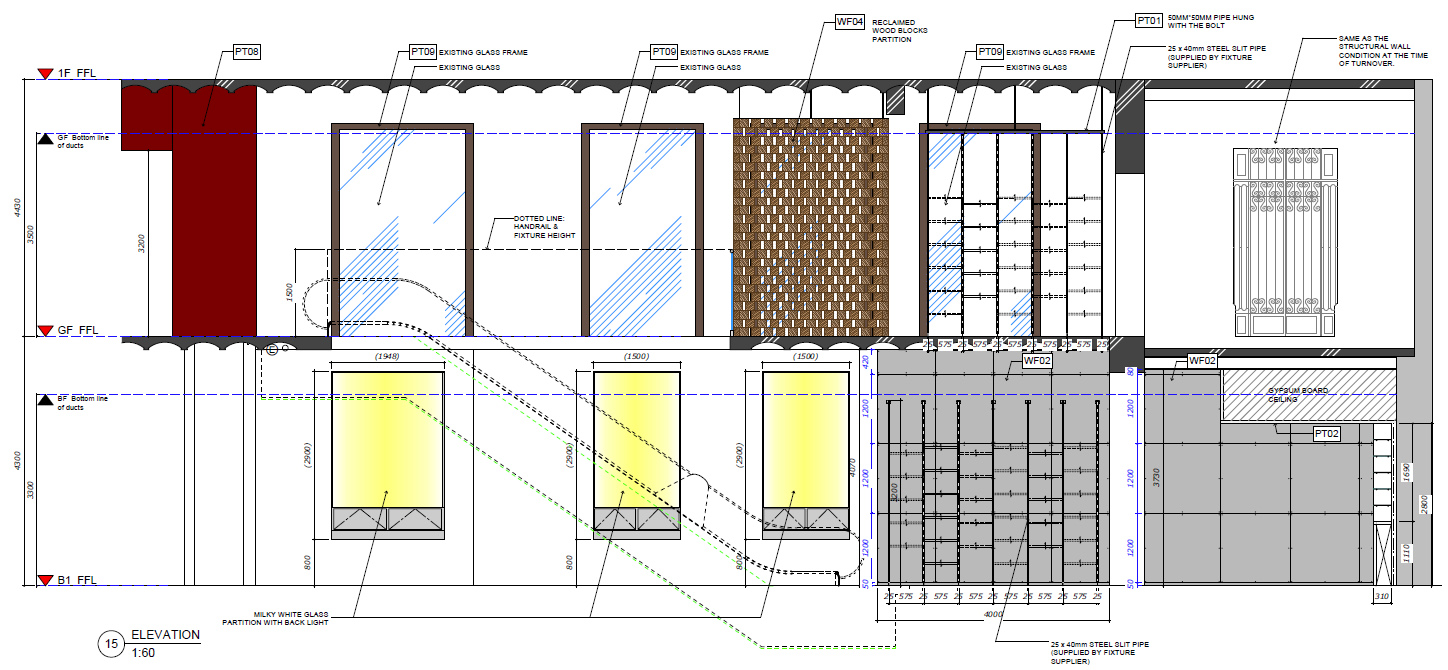Mr. Correa, let’s have a chat!
MUJI Flag-store in Barcelona
“No-Brand Quality Goods” – this is how the name of the Japanese lifestyle store MUJI can be translated. The brand was founded in Tokyo in 1980 under the name Mujirushi Ryohin, and operates 800 stores in over 26 countries. The promise this brand makes is simple, yet profound: no well-known brands, but good quality. This is reflected in the careful choice of materials, rational manufacturing processes, and a universal simplicity in design and use of the products, which cover a wide range from cosmetics, office supplies, clothing, to furniture.
MUJI is a brand whose credo is so firmly anchored that every product, even the brand name, reflects it. How do you build a flag-store for such a company? We asked David Correa, Senior Manager at TAKENAKA Spanish branch, about it.
The first European flag-store for MUJI was planned in downtown Barcelona. It covers two basements, a ground floor and an upper floor. Of the 1,500 m² that had to be refurbished, 980 m² were planned as retail area and the rest was intended as storage space. The selected location for the store is Barcelona’s most exclusive road, Paseo de Gracia, not far from Plaza Catalunya and Gaudi’s famous house Casa Batllo. It quickly became clear that this project would not be a simple expansion on the European market, but a whole campaign that would leave a lasting impact of how MUJI will be perceived on this continent. Accordingly, the expectations of the Japanese MUJI management, who led the refurbishment from Japan, were high.
This is where TAKENAKA came into play. “It was not easy to convince MUJI that we would be the right partner to execute this project successfully,” says David Correa. “Years of networking with Japanese organizations in and around Barcelona, the close contact with the Japanese community, and the trust we have gained there was crucial. It gave us a head start by learning about the project and making contact very early on. Last but not least, the many references of years of our operation in Spain led to a positive decision by MUJI”.
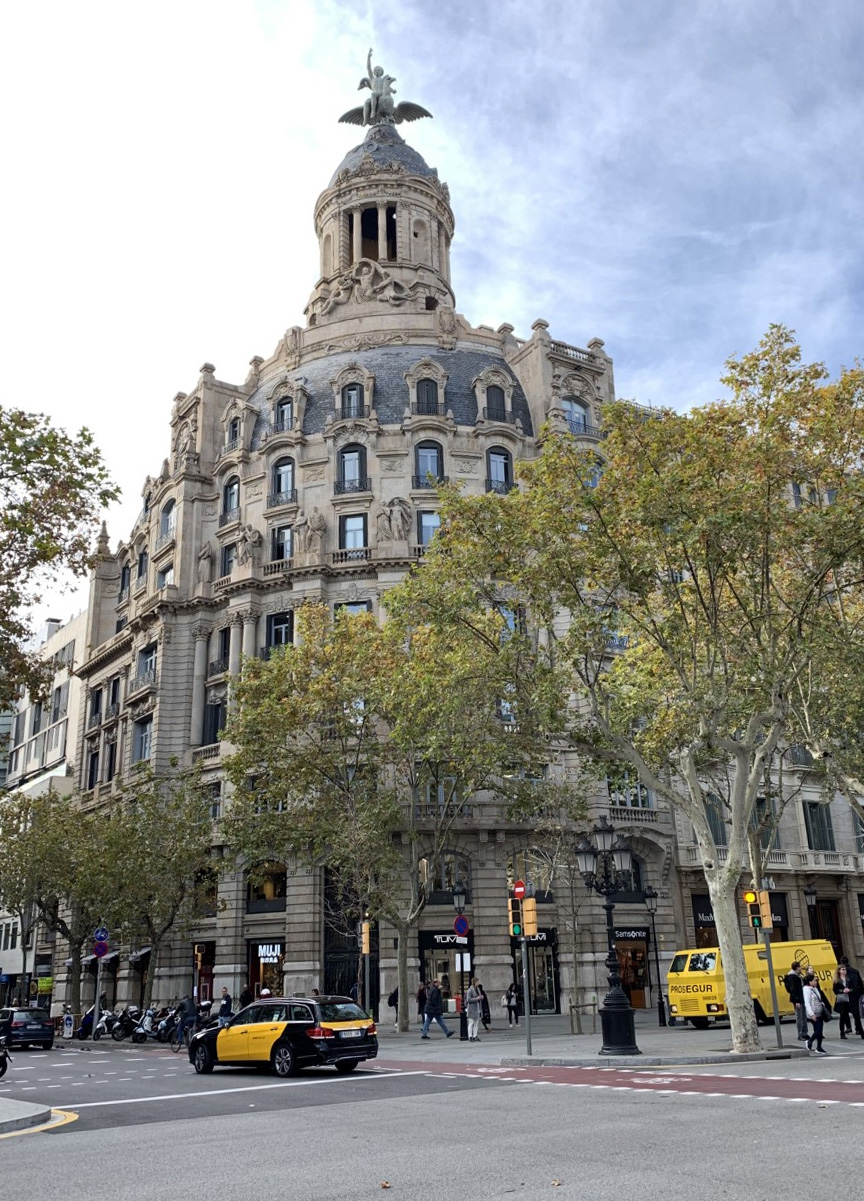
MUJI Store on Paseo de Gracia
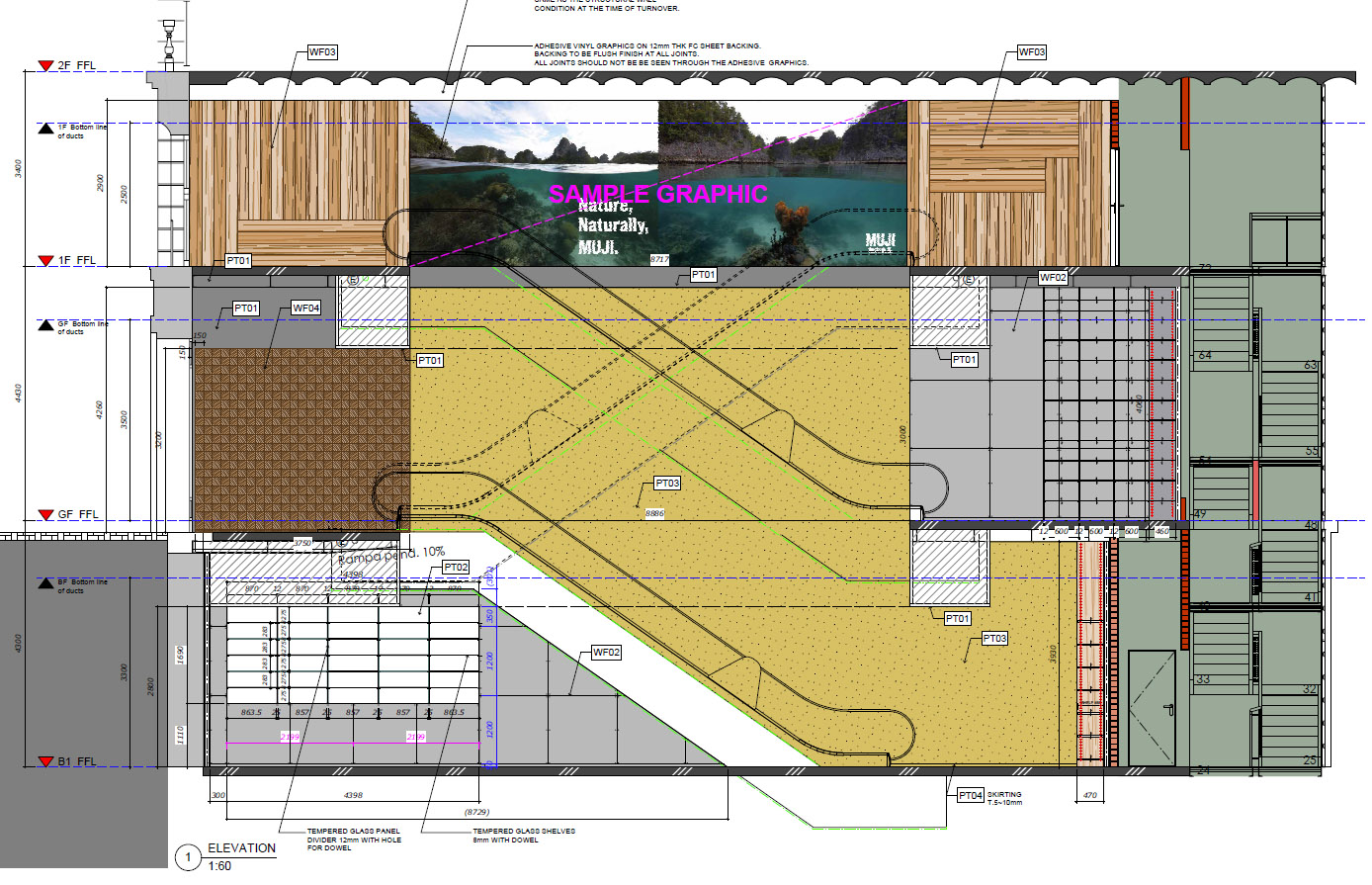
The planning and execution of the escalator proved to be particularly challenging
Execution of the project
TAKENAKA took on the role of the project manager right from the start. First, the current situation in Barcelona in general, and particularly in the Paseo de Gracia area in particular, had to be analyzed and reported to Japan. We accompanied them in negotiations with the owner of the building, a German insurance company. Details were discussed with engineers in Japan, costs were calculated, permits were obtained from various authorities, and subcontractors had to be found and managed.
“Things didn’t always go smoothly,” says Mr. Correa with a laugh. There was a lot of pressure from Japan, and the contact with the technical team was not always easy. The biggest challenge was the pressure of the tight timeline. The store was expected to open after only three months of renovation. “The project was very important to me personally,” says Mr. Correa when asked what the conversion meant to him. A lot of time and effort were invested, and during the last month he almost lived at the construction site. “In the end I had become part of the MUJI team. The trust that was put in us was simply overwhelming. It was a privilege for me to receive the keys for the front door and to be responsible for the opening at 05:00 on the day of the handover. This moment is a very nice memory for me”.
„In the end, I had become part of the MUJI-Team.”
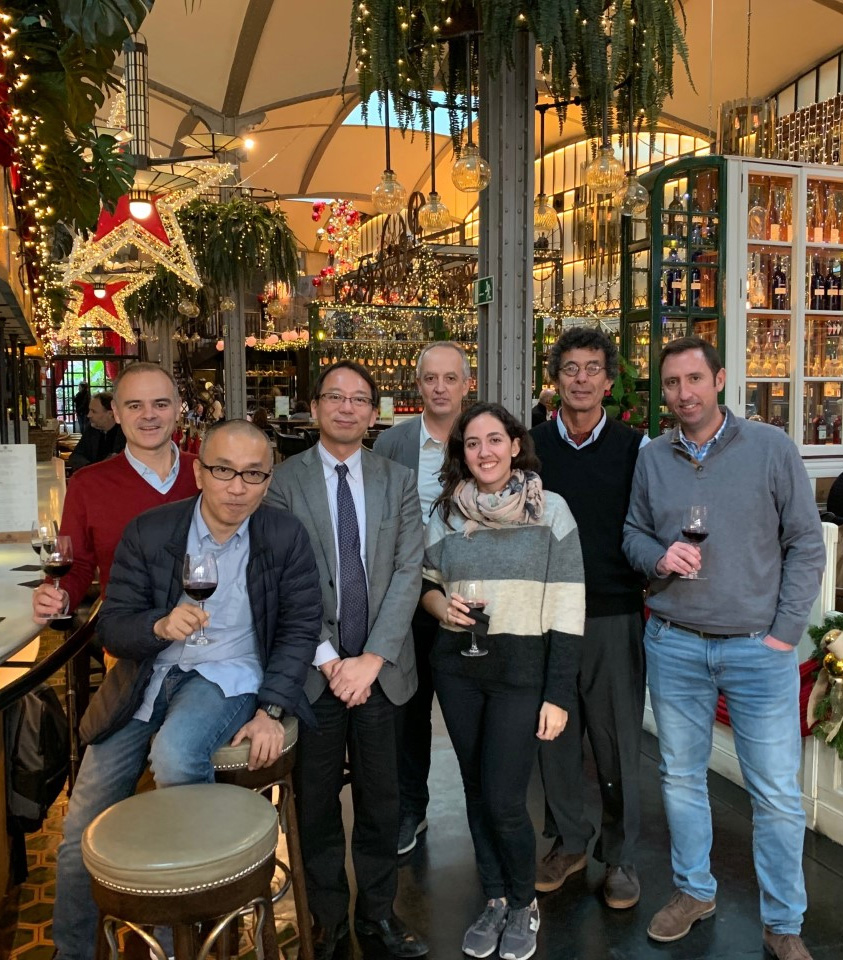
From left: Mr. Cantalejo (Grupo IC), Mr. Yoshimoto (Muji), Mr. Kurata (Takenaka), Mr. de Toca (Muji), Ms. Hernandez (Grupo IC), Mr. Correa (Takenaka), Mr. Asensio (Grupo IC)
When asked how long he has been working at TAKENAKA, Mr. Correa answers with a mischievous smile “Too long.” By 2020 he has already been with TAKENAKA for 33 years, which almost makes up for his entire professional career. Projects such as schools, a pavilion for the 1995 Expo in Spain, and even a building for the embassy are among the most exciting projects he has been able to work on. But a 50.000m2 distribution center for Sony left the biggest impression on him. “I was impressed by how much trust and confidence was put in me by the client. I even went to Japan to see their headquarters, to understand their standards and to ultimately meet their expectations”. The reason why he has been working for TAKENAKA for so long lies in his gratitude to have received so much appreciation and trust from the management, from the president, and from Mr. Takenaka himself, but also in the hope that new challenges and exciting projects will await him in the future. “For the future, I hope for new projects, especially from multinational companies, and the continued appreciation of my superiors.”
